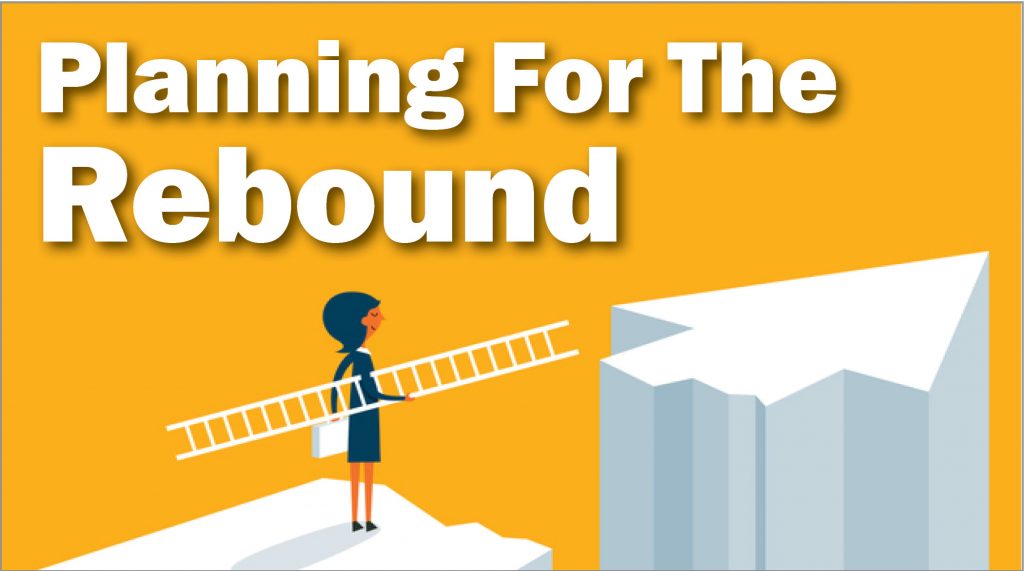Planning For The Rebound – Step 16: Managing Employee Performance During COVID-19: Not “Business As Usual”

As shelter-in-place restrictions are being modified or lifted altogether, employers are facing the challenge of employees returning to the workplace. Managing performance, in the best of times, is often difficult and it will be especially challenging as employees return to work in the time of COVID-19. One thing is certain: this will not be business as usual.
Employers will need to focus on three characteristics as employees return to work from shelter-in-place: clarity, flexibility, and patience. This does not mean that managers cannot define deliverables, have reasonable expectations of accountability, and provide accurate feedback if performance does not meet expectations. But it does mean that employers and managers will benefit from taking a step back and considering these three characteristics of a successful employer-employee relationship as the workplace continues to transition in this unusual time.
Clarity. Employees returning to work will be distracted by the unique circumstances presented by a COVID-19 world. Concerns about health and safety will be present in a way that never occurred previously. The employee’s home life, including children not in school, may also take attention away from the work at hand. As a consequence, employers and managers should take greater care in providing specific direction with exceptional clarity. Instead of solely relying on oral instructions, combining the oral direction with a follow-up email will be a better way to reach an unambiguous understanding of what is expected, or what the consequences of a lack of satisfactory performance may be.
Flexibility. Employers have had to become more adept at being creative while employees teleworked to an extent never considered before. That flexibility in listening to new ways to achieve solutions will need to be applied to managing performance in the new workplace. Although employees and teams may be in the same building or on the same floor, meetings and scrums will be different for many months to come. Competent managers will be open to getting things done differently. The focus will be on completing the project well by a deliverable date, but there should an openness to how those results are achieved.
Further, it is expected that more employees will be teleworking after shelter-in-place is lifted. Some employers are already planning on reduced floor space (and reduced rent), given that employees successfully worked from home for months. As a consequence, managing the performance of remote workers requires heightened planning, greater connectivity, and closer scrutiny of work/deliverables to be successful. That will need to continue, post shelter-in-place.
Patience. Many managers will simply want to have employees go back to the usual manner of working as they were before COVID-19. The expectation is that the workforce will be back to normal within weeks. However, employees may struggle with the change. People will want to talk and share their experiences, because they have not connected to their co-workers in the pre-COVID-19 way for months. The autocratic manager will want all of that “nonsense” to stop. However, it is not “nonsense,” and employees should be allowed to re-establish their work community in order for them to perform optimally. Consequently, managers should show patience in tolerating a different feel to the workplace, especially in the first month back at work, although holding the employees accountable for deliverables does not have to be compromised.
Management teams will continue to rely on the same principles that were key elements of a successful performance management system before COVID-19, including positive leadership, clear goals and objectives, documentation, and consistent follow-through. However, managers need to reflect on the extraordinary times that everyone has gone through and will continue to experience. That balance between accountability and an emotionally intelligent manager will be necessary to retain employees and foster excellence in the workplace.
Questions about COVID-19 and the workplace? Contact the Hirschfeld Kraemer lawyer who normally provides your legal advice, or you can reach out to John Baum in Hirschfeld Kraemer’s San Francisco office, jbaum@hkemploymentlaw.com, (415) 835-9006.
Did you miss previous posts in our Planning For The Rebound series? Click on the links below:
Step 1 – Requirements For Returning To The Workplace
Step 2 – Do I Have To Bring Back Furloughed or Laid-Off Employees?
Step 3 – Do Employers Need to Bring Back Under-Performers?
Step 4 – Ready To Go Back To Work? Not So Fast …
Step 5 – Passing the Test: COVID-19 Screening in the Workplace
Step 6 – Deciding Which Employees Can Return To The Workplace
Step 7 – Workplace Safety: Posters Are Not Enough
Step 8 – Safety Tips For Allowing Vendors and Visitors Into Your Workplace
Step 9 – Meal and Break Room Safety
Step 10 – Hygiene Tips For A Safe, Clean Workplace
Step 11 – A Workable Plan For Social Distancing
Step 12 – Dealing With Requests To Work Remotely: Separating Facts From Fear
Step 13 – Is Work Travel A Thing Of The Past?
Step 14 – New Hires and Offer Letters During COVID-19
Step 15 – Addressing Employee Return-To-Work Anxieties
For additional employer-focused information about COVID-19:
Click here to see the Hirschfeld Kraemer EMPLOYER’S GUIDE TO CORONAVIRUS





